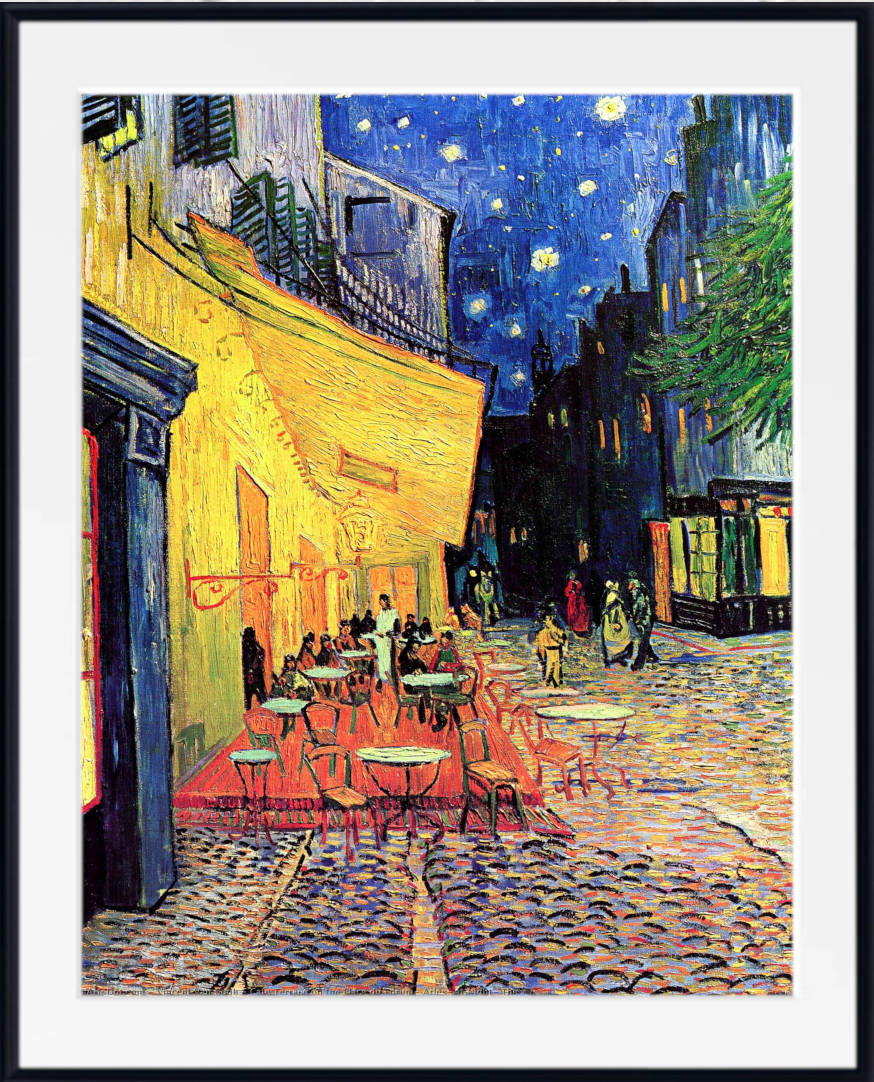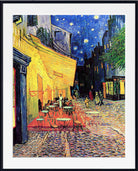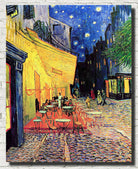Vincent Van Gogh Fine Art Print, Cafe Terrace on the Place du Forum, Arles
Couldn't load pickup availability
Vincent Van Gogh Fine Art Print, Cafe Terrace on the Place du Forum, Arles
Bring the Vibrant World of Van Gogh to Your Space
Transform your home or office with stunning, high-quality prints of Vincent van Gogh’s most celebrated paintings. From the swirling skies of The Starry Night to the radiant sunflowers that have captivated art lovers for generations, our collection of Van Gogh prints offers a chance to own a piece of artistic history.
Crafted with precision, each print captures the essence of Van Gogh’s bold brushwork, rich textures, and vivid colors. Whether you're a devoted art enthusiast or seeking a striking focal point for your decor, these exquisite reproductions bring the genius of Van Gogh into your life.
Vincent van Gogh: A Life of Passion and Artistry
Vincent van Gogh (1853–1890) was a Dutch Post-Impressionist painter whose emotional intensity and revolutionary use of color reshaped the art world. Despite struggling with mental illness and selling only one painting during his lifetime, Van Gogh created over 2,000 works, including some of the most famous masterpieces in history. His deeply expressive style, influenced by his inner turmoil and boundless creativity, continues to inspire artists and collectors worldwide.
The Distinctive Painting Style of Vincent van Gogh
Van Gogh’s artwork is instantly recognizable due to his bold, expressive brushstrokes and striking use of color. His signature impasto technique—applying thick layers of paint—adds a dynamic, almost sculptural quality to his work. He masterfully blended bright yellows, deep blues, and fiery reds to convey movement, emotion, and the raw beauty of nature.
Whether it's the dreamlike swirls of The Starry Night, the golden radiance of Sunflowers, or the intimate depth of Café Terrace at Night, Van Gogh’s works evoke powerful emotions and a unique sense of wonder.
Why Choose Our Van Gogh Art Prints?
- Museum-Quality Prints – Crisp details and vibrant colors bring every brushstroke to life.
- Premium Materials – Available on high-quality canvas or archival paper for lasting durability.
- Multiple Sizes – Perfect for any space, from cozy corners to grand statement walls.
- Perfect Gift for Art Lovers – A thoughtful and timeless present for anyone who appreciates fine art.
Own a Piece of Art History Today
Add an iconic Van Gogh print to your collection and experience the genius of one of the greatest artists of all time. Browse our selection and find the perfect masterpiece to elevate your space.
All orders for unframed fine art prints and original paintings are dispatched within 2 working days of receipt of payment.
Orders for custom framed prints are dispatched within 4 working days.
All orders are fully tracked from dispatch to delivery at your home or business.
All print and original painting orders are fully insured against loss or damage in transit. We refund or replace any damaged or lost orders.
Buy with confidence - read what our satisfied customers have to say - Reviews
Fine art papers are printed without any additional white border Please let us know at the time of ordering if you would like a small additional white border.
Rolled canvas options have an additional white border of approximately 2.5 inches (7cm) on all 4 sides to aid stretching.
Ready to hang canvas panels are stretched on 1.5 inch deep solid pine frames from sustainable forestry sources. The image is mirrored on all 4 sides to give an aesthetically pleasing finish.
Why not have us gift wrap your order and attach a personalised message to the recipient. Available for all orders. Each order is hand wrapped in high quality gift wrap with meatllic ribbon and bow. Your personalised message is printed on a card which is included with your order.
Have your hand wrapped gift delivered directly to the recipient.
Full tracking and insurance included with every order.
Please note design may vary depending upon availability
Just purchase the gift wrap option HERE
Why Choose GalleryThane?
- Printed and framed in-house
- Free UK delivery
- Free EU an USA delivery on orders over £200
- Tracking and insurance included in every order
- Fast 1-3 day dispatch
- Gift wrapping service available
- Gallery quality materials
- Sustainable, eco-friendly packaging
- Great customer support
What makes our Prints and Canvas Panels so special

Latest Giclee Printing Technology
We have invested in the latest wide format print technology to produce museum quality giclee prints utilising the highest quality pigment inks to give outstanding colour reproduction.

Museum Quality Archival Fine Art Papers
We print on the finest quality fine art papers with textured, smooth and lustre finishes for prints which last a lifetime.
From aceo miniatures to 40x80 inch large format, every print has our lifetime quality guaranteee.

Solid Wood Frames, Cotton Canvas
All of the wood for our canvas panels and frames is responsibly sourced from manages forests. Our cotton canvas is completely seedless for the highest quality reproduction possible.

















